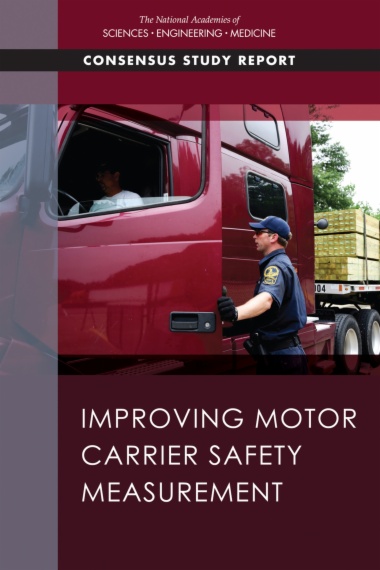

Every year roughly 100,000 fatal and injury crashes occur in the United States involving large trucks and buses. The Federal Motor Carrier Safety Administration (FMCSA) in the U.S. Department of Transportation works to reduce crashes, injuries, and fatalities involving large trucks and buses. FMCSA uses information that is collected on the frequency of approximately 900 different violations of safety regulations discovered during (mainly) roadside inspections to assess motor carriers' compliance with Federal Motor Carrier Safety Regulations, as well as to evaluate their compliance in comparison with their peers. Through use of this information, FMCSA's Safety Measurement System (SMS) identifies carriers to receive its available interventions in order to reduce the risk of crashes across all carriers.
Improving Motor Carrier Safety Measurement examines the effectiveness of the use of the percentile ranks produced by SMS for identifying high-risk carriers, and if not, what alternatives might be preferred. In addition, this report evaluates the accuracy and sufficiency of the data used by SMS, to assess whether other approaches to identifying unsafe carriers would identify high-risk carriers more effectively, and to reflect on how members of the public use the SMS and what effect making the SMS information public has had on reducing crashes.